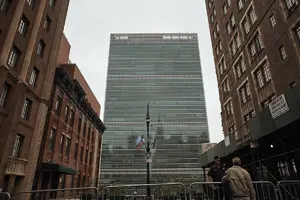Summary: Great Nicobar Island Project and Associated Concerns
The Union Ministry of Tribal Affairs has requested a report from the Andaman and Nicobar Islands administration regarding claims that forest rights have not been settled under the Forest Rights Act (FRA) of 2006 before the diversion of forest land for the Great Nicobar Island Project. Tribal Councils, established under the Andaman and Nicobar Islands (Tribal Councils) Regulation, 2009, have limited powers compared to autonomous councils under the Sixth Schedule of the Constitution. The administration argues that it does not need to implement the FRA, citing the Protection of Aboriginal Tribes Act of 1956 (PAT, 1956), which allows unilateral land diversion. However, the FRA requires consent from local Gram Sabhas, emphasizing tribal participation in resource management.
The Great Nicobar Island Project
Inception and Governance: Initiated by NITI Aayog and approved by the Union Cabinet in 2021, the Great Nicobar Island Project is a massive Greenfield infrastructure endeavor overseen by the Andaman and Nicobar Islands Integrated Development Corporation (ANIIDCO).
Project Components: Key features include:
- An international transshipment port at Galathea Bay.
- A greenfield international airport.
- A 450 MW power plant.
- A modern township.
Strategic Importance: The project is located at the mouth of the Malacca Strait, a vital shipping lane, enhancing India’s maritime influence and security. The transshipment port aims to redirect cargo traffic from overseas ports, bolster connectivity to the mainland, and facilitate military logistics.
Economic Implications
The development is poised to generate substantial economic benefits, including foreign direct investment (FDI), increased activity at Indian ports, and improved logistics. It is positioned to serve as a regional maritime hub while also addressing the logistics of India’s defense operations.
Ecological and Social Concerns
Despite its potential benefits, significant concerns linger regarding the impact on tribal populations and the ecological integrity of the region:
-
Tribal Rights: The project could adversely affect the Shompens and Nicobarese tribes, leading to possible displacement and health risks due to increased migration.
-
Biodiversity: Great Nicobar is rich in biodiversity, with over 85% of its area still covered in tropical rainforests. The Galathea Bay site is a Ramsar Convention protected area known for its endangered Leatherback Sea Turtle nesting sites. Environmentalists worry that construction will disrupt essential ecosystems.
-
Deforestation: Approximately 960,000 trees are at risk of being cut down, which will affect the region’s carbon sequestration capacity.
-
Coastal Erosion: Development could compromise natural coastal defenses, such as mangrove belts, exacerbating vulnerability to disasters.
-
Seismic Concerns: The island sits atop a seismic fault line, raising alarms about disaster risks, especially given its history of tsunamis.
Conclusion and Recommendations
While the Great Nicobar Project holds promise for enhancing connectivity and defense capabilities, the ecological fragility and social implications cannot be neglected. A sustainable approach that prioritizes ecological sensitivity and community engagement is imperative. This would help balance national interests with the responsibility to preserve tribal rights and biodiversity. Adopting phased, considerate development frameworks could help in addressing the concerns surrounding this ambitious project.




